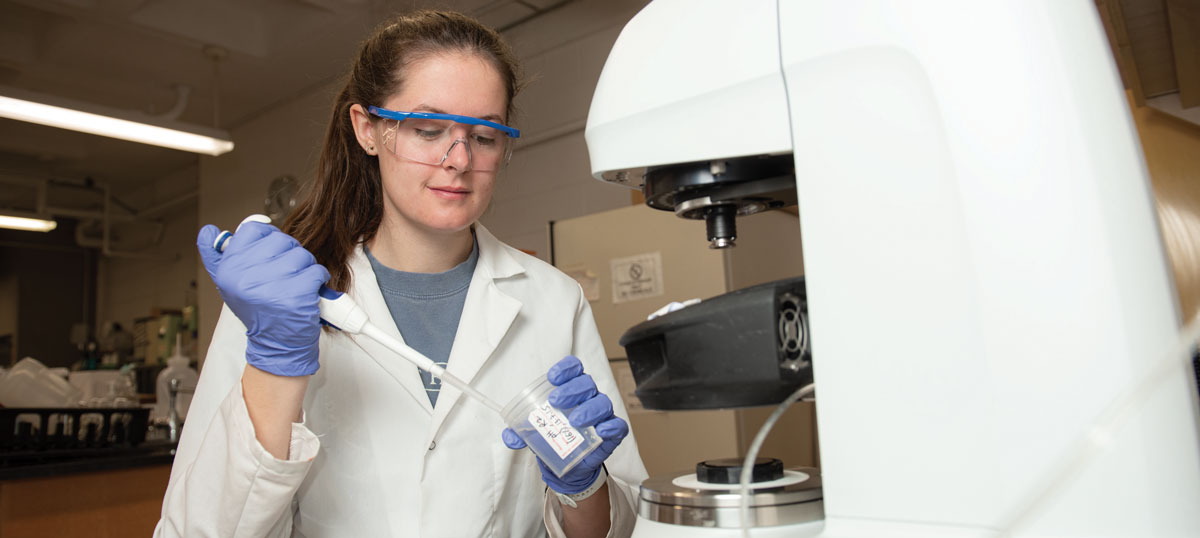Making good foods better
Food science student has appetite for research
By Beth Bohn

Jill Broxterman, senior in food science and industry, is seeking ways to add more protein to dairy-based products without changing how they look, taste and feel.
Jill Broxterman is hungry to take on the challenge of feeding a growing world, whether by ensuring food products are safe to consume or by making foods more nutritious.
Originally an engineering major when she entered Kansas State University in fall 2019, Broxterman soon switched to food science and industry, offered through the College of Agriculture. The college is home to the Food Science Institute, which facilitates the university’s food science programs and provides research and technical assistance to the food industries.
“I was drawn to the real-world applications of food science and I love the chemistry and biology behind it,” said Broxterman, now a senior. “I also was very interested in the research and development opportunities that this degree has to offer, so my advisor recommended that I do undergraduate research to gain experience and enhance my lab skills.”
Broxterman currently is working with milk proteins — casein and whey — and microparticulation — a way to control particle size — in the lab of Jayendra Amamcharla, professor of animal sciences and industry, who has a research emphasis on dairy foods.
“Greek yogurt, for example, has the high protein content that consumers want, but that means it also has an increased thickness or viscosity,” Broxterman said. “Consumers want the higher protein content but still expect the same mouthfeel and consistency of regular yogurt. This poses a challenge for the dairy industry: increasing protein content while attempting to maintain the viscosity.”
Altering the casein and whey protein interactions through microparticulation is one of the ways to control the viscosity.
“Whey proteins can be microparticulated, which limits the casein-whey protein interactions, and then used as an ingredient in acid gel-type products, including some dairy foods like yogurt,” Broxterman said. “Microparticulation may be a potential solution for the dairy industry to give consumers dairy products with high protein content and with the desirable mouthfeel, texture or viscosity.”
Broxterman presented on her milk protein research at the K-State fall 2021 Animal Sciences and Industry Undergraduate Research Symposium.
With the world’s population expected to exceed 9 billion people by 2050, it is projected that farmers will need to produce 70% to 100% more food. This challenge is why Broxterman chose to pair her food science major with K-State’s secondary degree in global food systems leadership.
An honors list student, Broxterman plans on completing her bachelor’s degree in spring 2023. She wants to get her master’s degree but may consider working in the food industry first as a quality assurance or research and development specialist.
Seek more
Learn more about the Food Science Institute.